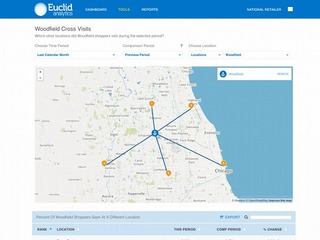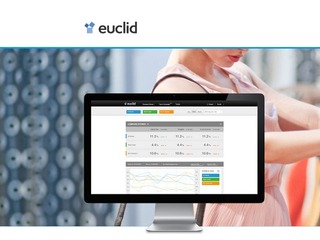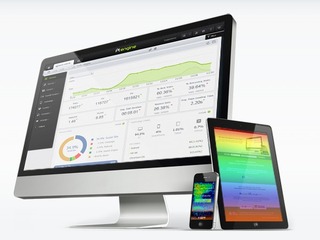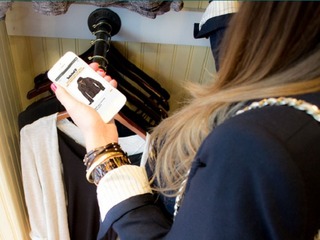Ezra partners with RAYUS Radiology to expand nationally
Ezra's AI cancer screening platform will be available in 150 RAYUS locations
Read more... Digital ad spending is big business. It will reach a total of over $67 billion this year; by 2019 it's expected to be over $93 billion. Of course, digital ads don't do much good if they don't result in an increase sales. And there's an even bigger problem: if there is an increase in those sales, how do advertisers know that those ads are what led to it?
Digital ad spending is big business. It will reach a total of over $67 billion this year; by 2019 it's expected to be over $93 billion. Of course, digital ads don't do much good if they don't result in an increase sales. And there's an even bigger problem: if there is an increase in those sales, how do advertisers know that those ads are what led to it?
Foursquare says it now has the answer to that question, as the company introduced a new ad product, called Attribution Powered by Foursquare, which can actually directly connect digital ads to offline sales.
Attribution is able to measure what Foursquare refers to as "incremental lift" of an ad campaign or "how much the ads influenced people as compared to a demographically-similar control group of people who haven’t seen them."
It's able to do this by integrating a pixel into a digital ad, then using its own location-data to monitor how frequently Foursquare users visit those places it saw in those ads, and compare it to the behavior of people who didn't see the ad, thereby showing how effective the ad campaign was on those who came across it. The company can provide this data on a dail abssis.
"Attribution powered by Foursquare is the best tool to measure the conversion of media spend into real world visits to retail locations. In plain English, that means we can measure how much advertising actually leads people to go shopping in stores or dining in restaurants," Steven Rosenblatt, President of Foursquare, wrote.
Attribution can be integrated with nearly any digital ad campaign, even those that don't run campaigns on Foursquare, or its sister app Swarm. The company has already been running test pilots for the past few months and is launching with TGI Fridays, Brown-Forman, Flipboard, Drawbridge, and Adelphic.
One of those tests, done with Flipboard, found that Attribution was able to show an advertiser, which was not named, that their ad campaign resulted in a 12 percent incremental lift in a week. Obviously that's good news for the advertiser, but also for Flipboard, which can now say definitively that running ads on its platform will be effective. That also allows Flipboard to potentially charge more for running those ads.
This technology could be a game changer for the digital ad space, and for Foursquare, which has been struggling in recent years over the effectiveness of the use of its data. This started to change last year, though, as it launched Pinpoint, an advertising platform that lets brands target Foursquare users based on their location data.
More recently the company replaced its long-time CEO Dennis Crowley, with COO Jeff Glueck taking over in order to put more emphasis on its enterprise tools and programmatic advertising platform. Crowley was made executive chairman of the company.
Foursquare has a big advantage over some of its rivals in the social space, most notably Twitter and Facebook, given that its entire premise is built around location data, and knowing where its users are at all times. Attribution allows it to finally monetize that advantage.
Bridging online and offline
There are a number of companies out there that are attempting to bridge the online and offline worlds.
One of the most notable startups is Euclid, which offers stores a platform that helps its customers see how people interact with physical places, and how they relate to one another. It gathers insights and information about store shoppers, including how shoppers spent in the store, and how long lines in the store were. Euclid then reports this data back to the retailer so that it can use it to optimize the performance of their marketing, merchandising, and operations, as well as boost traffic, engagement, loyalty, and revenue.
The company recently raised $20 million, for a total of $44 million.
Another is Ptengine, which a heatmap platform that collects and analyzes visitors’ website behavior across all devices, in real time. The platform empowers web development, marketing, and UI/UX teams to improve online conversion rates and drive sales. The company raised $9 million last year, bringing its total funding to $14 million.
There's also Swirl, which uses micro-location technology to increase store traffic, shopper engagement and sales conversion. Its platform combines indoor location beacons with cloud-based marketing campaign management services and a software development kit, so retailers can add an in-store mobile experience to any existing mobile app. That company has raised $32 million in funding, including $18 millon last year.
(Image source: medium.com)
Ezra's AI cancer screening platform will be available in 150 RAYUS locations
Read more...Foggy uses the Taptic Engine in Apple Watch to provide vibrotactile stimulation for gait freezing
Read more...The new service, called PAM Health Therapy at Home powered by Luna, will be available starting May 1
Read more...Startup/Business
Joined Vator on
Euclid delivers actionable shopper insights to brick-and-mortar retailers—think Google Analytics for offline retail. Providing real-world metrics like Engagement Rate, Visit Duration, and Visit Frequency, Euclid helps retailers optimize the performance of their marketing, merchandising, and operations. With simple setup and an easy-to-use web dashboard, national chains and local boutiques alike can boost traffic, engagement, loyalty, and revenue. Built on a commitment to protecting individual privacy, Euclid’s technology provides only aggregated, anonymous insights. Euclid is redefining retail decision-making, from the stockroom to the boardroom.



